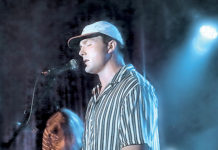Rated: R
By Joan Ellis
You won’t find many people who live their dreams as thoroughly as Roger Ebert did.
“Life Itself” is a documentary record of his joyful life, made by friends and family during the illness that killed him last year. These included director Steve James, producers Martin Scorsese and Steven Zallian and Chaz Ebert, the woman who changed his life.
As a boy in Urbana, Ill., Ebert wrote and delivered a newspaper; a little older, he worked for the local newspaper in spite of his father’s urging that he become a teacher. At the University of Illinois he became editor of the Daily Illini and continued his arc of a facile writer who could take control of situations that required adult decisions.
He dove into total immersion in the press world of Chicago, hanging out nightly in O’Rourke’s Tavern on North Avenue in the city he grew to love deeply. Known as a great storyteller, he overdid the drinking and stopped in 1979 when he joined AA.
After becoming the movie critic for the Chicago Sun Times, his reputation as a critic grew until the Sun Times and its powerful competitor, the Chicago Tribune, put Gene Siskel and Roger Ebert together on PBS television in a thoroughly unlikely matchup that audiences loved.
Neither wanted to work with the other and throughout their growing success they bullied each other verbally, even though they both took film seriously and in turn were taken seriously as writers. Ebert was a control freak and he couldn’t control Siskel. Their relationship, on TV and off, was a battle. He rejected tempting offers from the Washington Post with, “I couldn’t learn those streets.” Ebert remained forever a Chicago boy.
Early on in the film, Chaz introduces the bad news of Ebert’s cancer and plants us firmly on the tortured path that lay ahead for him. A series of complex surgeries left him without his jawbone, his face badly disfigured permanently. Though he couldn’t walk or talk or eat, he continued to type his reviews on a laptop and, astonishingly, to smile and convey his pleasure in the work he loved so much.
At 50, he had fallen in love and married Chaz and her entire family. The strength of their bond carried both of them through the spread of his cancer while Ebert, as only he could, beamed at his beloved caregiver just because they were together.
There is telling commentary by both Chaz and Gene Siskel’s wife Marlene that shows the deep respect each man had for the other in spite of their battles.
Nearly immobilized toward the end, Ebert had nevertheless fallen in love with social media and the miracle of the Internet, seeing all of it as a renaissance in film appreciation. What did he do as he began to fail? He blogged about movies.
Friends and family of Roger Ebert have given us a moving, unvarnished account of an undeniably peppery, often difficult man who had realized all his dreams.
Joan Ellis’ address on the Internet, which contains her review library, is JoanEllis.com.














